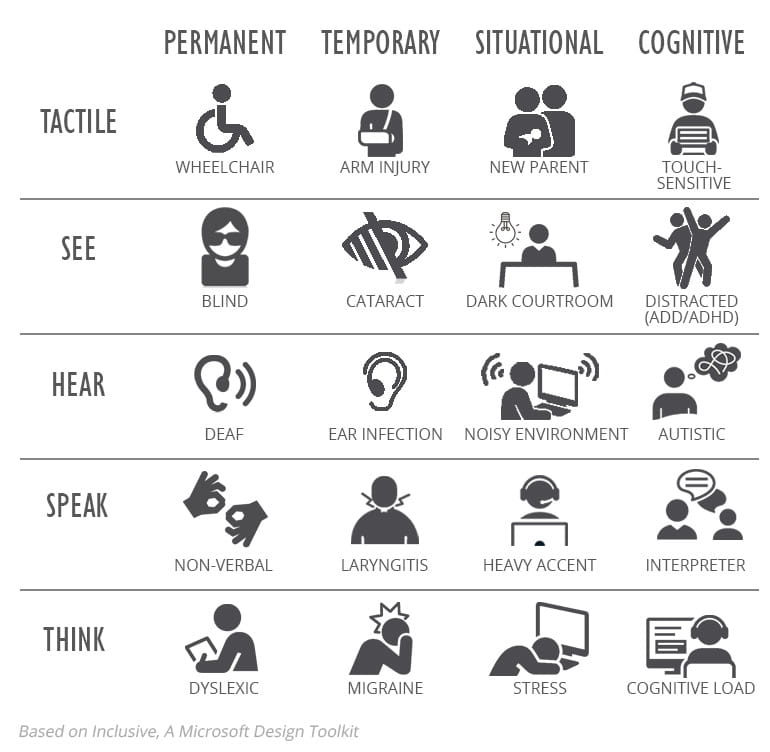There are thousands of different potato varieties. Thousands. Walking through the local supermarket, this fact is hard to imagine. We are often offered a very limited selection: the humble Russet, the rosy Desiree, perhaps the buttery Kipfler. And while it’s all well and good to dish up these staple spuds, the reason for this lack of diversity reaches far beyond the dinner table. It reaches our workplaces.
While the 20th century spawned many new ways of operating, a result of industrialisation, one of these is the tendency towards uniformity. Monoculture farming involves the production of one type of crop or stock, as opposed to polyculture farming, or more traditional farming, which includes a variety of crop or stock varieties in the one location.
But potatoes aside, the trend towards uniformity in the 20th century is visible in many places, not just farmland. Many workplaces have fostered homogeneity in thought and behaviour, where those who do not work in the same way as the majority are weeded out, even if unintentionally.
What we now know, is that a lack of diversity can breed groupthink and is bad business.
While we are seeing a great deal of progress, with more women and people of colour appointed in leadership positions and businesses becoming more welcoming for the LGBTQI+ community, neurodivergent people are often overlooked.
Research from EY suggests that in the US, neurodivergent people make up to 20 per cent of the population, and 85 per cent of them are facing unemployment or underemployment. That’s a huge amount of untapped talent and potential.
Although neurodivergent people are a minority, organisations like SAP, Hewlett Packard Enterprises, Microsoft, and Deloitte, among others, are quickly realising the benefits of designing inclusive workplaces that nurture the unique perspectives of neurodivergent people.
There is still a long way to go before neurodiversity is truly embraced. A large number of neurodivergent people are unemployed and struggling. Even if some do have jobs, many are afraid to disclose their conditions at work because of the stereotypes and stigmas. If anything, we are just at the tip of the iceberg.
So, how can we build workplaces that are neuro-inclusive and why is it worth it?
What is neurodiversity?
Neurodiversity refers to the virtually infinite neurocognitive variability within the human population and includes people with autism, ADHD, obsessive compulsive disorder, dyslexia, dyscalculia, and alexithymia and dyspraxia.
Within the workplace, neuro-inclusivity is about recognising this variability and how valuable it can be, and acknowledging that different neurological perspectives bring different ways of thinking to the challenges that businesses face.
The exclusion of neurodivergent people from workplaces has often been a result of failing to adjust. Neurodivergence has been viewed as a hurdle because it requires design effort, collaboration, and adjustments. Steve Silberman in NeuroTribes suggests that: Neurodivergent people do not suffer from disability, they suffer from difficulties created by a society that fails to accommodate cognitive differences. We all have more to gain if we open our minds to understanding these and designing differently.
Building resilience
Monoculture practice is not accidental – there are plenty of benefits achieved by uniformity. Selecting one crop that will thrive best in the local environment enables high productivity and efficiency. Specialisation leads to maximum yield, higher return on investment, and makes for a process that is easier to manage and predict.
But there’s a flip side. Monocultures introduce certain risks. What if the singular crop falls prey to pest infestation? Or if the environmental needs of the particular crop are not met due to climactic variability?
It’s the same in the workplace. As the trials of the 21st century continue to mount, it’s becoming apparent that we need to be open to changing the way we approach new challenges. Resilience in the face of change and adaptability are not items on a wish list, they are now essential to how we manage change.
Employing people who are neurodivergent can encourage new ways of thinking and, as many businesses are experiencing, it’s really good for the bottom line.
Neurodivergent people often have a unique approach to challenges, which allows businesses to create more well-rounded solutions. Sometimes, it’s the neurodivergent person who is most likely to ask novel questions, identify hidden discrepancies, or think outside the box.
Planting only one type of spud in our fields tends to leave us less resilient to changes. If something goes wrong, we are unable to change tack, unable to draw on divergent strengths, unable to adapt effectively to unforeseen challenges.
And this idea isn’t merely hypothetical. After hiring 100 neurodivergent people through its new recruitment process, EY found that "these employees often excel in lateral thinking, problem solving and creativity". Hewlett Packard’s neurodivergent software testers observed that many projects always seemed to go into crisis mode before launch. They questioned the corporate acceptance of the chaos and helped successfully redesign HP’s software launch process.
Furthermore, employers are finding that meeting the challenge of embedding neurodivergent people within the workplace produces learning opportunities for everyone involved.
A neurodivergent person may have communication difficulties, meaning their leaders and colleagues may need to learn alternative ways of communicating. While, like any kind of change, it may be difficult at first, it can confer many benefits.
People will learn to express themselves more clearly or more concisely. People will learn to make fewer assumptions when communicating. Perhaps people will learn to use alternative communication methods rather than always relying on the spoken word. These learnings will generalise, improving the overall capacity of a team to communicate, both internally and with clients.
Designing for a neurodiverse workplace
Today, it’s readily acknowledged that workspace accessibility is essential, whether it’s in regard to people who are blind, deaf or have physical disabilities. As a result, workspaces are now designed to accommodate various requirements: wheelchair accessibility, ergonomic considerations and workplace aids are all common examples of this shift.
But what are we doing to accommodate people who have acoustic or light sensitivities? What about people who find it incredibly difficult to focus in an open plan office? Or people who are exhausted, rather than energised, by working in group settings or activity-based workplaces? Ensuring neuro-inclusivity in workplace design requires a more nuanced approach.

Neuro-inclusivity starts with getting the right people at the table. The approach to creating inclusive environments often involves a designer, or an engineer, but it’s crucial to ensure that neurodivergent people are given the opportunity to share their lived experience.
Neurodivergent people are often more acutely aware of their environments, as their brains don’t automatically filter out the flickering light or humming air-conditioner. They are more likely to be able to identify the irritant that others may not be consciously aware of. These irritants may be contributing to a reduction in comfort and thus a reduction in productivity generally.
Listening to the needs of neurodivergent people helps to identify other specialist expertise required to create inclusive workspaces. Organisational design considerations, behavioural psychology, human factors engineering, and change management are all important factors, but defining what accessibility means to a neurodivergent person is the first step if these approaches are to produce effective results.
Explore how multitasking and constant notifications drain energy, fragment attention, and hinder deep, focused work essential for breakthroughs.
Listen to the PodcastCreating a safe space
While consulting with neurodivergent people to understand their specific needs seems like a no brainer when it comes to creating more inclusive workplaces, it’s also crucial to acknowledge that many forms of neurodiversity are still heavily stigmatised.
The reality is that many neurodivergent cognitive perspectives are misunderstood. Neurotypical folk tend to think that autistic people are male maths geniuses, people with ADHD are hyperactive, or that people with OCD are painstakingly distracted by nonconformity.
Here’s the truth: there is more than one type of ADHD and the lesser known types are often overlooked, particularly in women. OCD is not just about being obsessively tidy or clean, it often comes from unwanted thoughts and fears. Every autistic person’s strengths and support needs are different, they don’t necessarily excel in maths – some are more proficient in arts or sciences. The spectrum is broad and the neurodivergent population includes people of all genders, sexualities, cultural backgrounds and ages, working in every type of profession and organisation.
Coming to terms with these misunderstandings requires creating a safe space, where neurodivergent people can turn up genuinely and offer their insight without fear of being categorised, underestimated or overlooked for opportunities. In doing so, businesses and leaders will be able to have a deeper understanding about their people and create a workplace environment where people of different neurotypes can unleash their full potentials.
As cultural change catalyst Verna Myers said: “Diversity is inviting us to the party, inclusion is asking us to dance.”
It’s one thing to tick the diversity box by employing neurodivergent people, it’s another issue entirely to allow those employees to participate authentically and flourish in an organisation. And if we don’t invite neurodivergent people to dance, we may never discover the unique moves they’ve been perfecting for quite some time.
This blog was authored by: Kat Crewes and Robert Holmes






